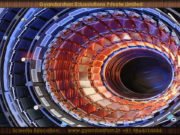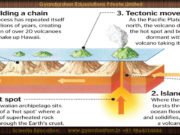Why do ice crystals form when melted ice cream is refrozen?
Ice crystals form when melted ice cream is refrozen due to changes in the structure and distribution of water molecules. Here's a breakdown of...
Root canals
Although they seem pretty solid, our teeth are hollow inside – all the way to the roots. The core is filled with nerves, blood...
Why is chocolate bad for animals?
Nearly all humans love chocolate, it gives us immense pleasure when we devour it and contains nothing that is directly harmful too us, unless...
Heatwaves explained: The causes and effects of hot weather
Although, according to Met Office meteorologist John Hammond, there’s no official definition of a heatwave, these hot-weather phenomena take their toll not only on...
How does sunburn damage the skin
Sunburn is caused by an overexposure to either sunlight or artificial UV rays. Sunburn doesn’t occur every time the skin is exposed, indeed low-...
CERN’s pentaquark: The Large Hadron Collider continues to amaze the science world
With the recent discovery of the pentaquark, we are once again reminded of the pioneering work that’s being carried out at CERN in Geneva.
Pentaquarks...
G-force explained: How acceleration can knock you out
When you’re hurtling down the steel track of a roller coaster, it might seem that your stomach is climbing into your throat, and your...
Golf science: The secret to improving your swing – infographic
The secret to becoming a pro golfer isn’t just about practice, discipline and athletic skill – a good knowledge of physics can really help...
Carbon nanofibres
American scientists have made a significant breakthrough in the production of carbon nanofibres. They are now able to make this valuable manufacturing material out...
Memory science: can you extend your short-term memory?
As you read this article, you store the words at the beginning of each sentence in your short-term memory while you work your way...
A flea can accelerate faster than the Space Shuttle
A jumping flea reaches dizzying heights of about eight centimetres (three inches) in a millisecond. Acceleration is the change in speed of an object...
Venus is the only planet to spin clockwise
Our Solar System started off as a swirling cloud of dust and gas which eventually collapsed into a spinning disc with the Sun at...
The Earth is a giant magnet
Earth’s inner core is a sphere of solid iron, surrounded by liquid iron. Variations in temperature and density create currents in this iron, which...
Stomach acid is strong enough to dissolve razor blades
Your stomach digests food thanks to highly corrosive hydrochloric acid with a pH of 2 to 3. This acid also attacks your stomach lining,...
If you took out all the empty space in our atoms, the human race...
The atoms that make up the world around us seem solid, but are in fact over 99.99999 per cent empty space. An atom consists...
It takes 8 minutes, 19 seconds for light to travel from the Sun to...
Thermal cameras detect the heat lost by a subject as infrared, but polar bears are experts at conserving heat. In space, light travels at...
Chalk is made from trillions of microscopic plankton fossils
Tiny single-celled algae called coccolithophores have lived in Earth’s oceans for 200 million years. Unlike any other marine plant, they surround themselves with minuscule...
Hawaii moves 7.5cm closer to Alaska every year
The Earth’s crust is split into gigantic pieces called tectonic plates. These plates are in constant motion, propelled by currents in the Earth’s upper...
A teaspoonful of neutron star would weigh 6 billion tons
A neutron star is the remnants of a massive star that has run out of fuel. The dying star explodes in a supernova while...
Some metals are so reactive that they explode on contact with water
There are certain metals – including potassium, sodium, lithium, rubidium and caesium – that are so reactive that they oxidise (or tarnish) instantly when...
































